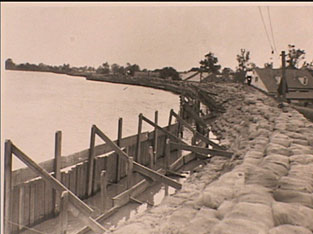“Just as it was important that Broadway not remain in the dark after Sept. 11, it’s important that we start thinking about the future despite all the very depressing news around us.” — Bill Hines, managing partner of a New Orleans law firm, on plans to revive parts of that city quickly.
 New Orleans was founded in 1718, specifically in the Autumn. The following Spring and Summer the French settlers realized their high ground was not high enough to avoid flooding, and so the building of levees began. That building — eventually assumed by the Army Corp of Engineers — has continued ever since. Some say it “set off an environmental chain reaction that helped destroy the natural barrier protecting New Orleans from catastrophic storms.”
New Orleans was founded in 1718, specifically in the Autumn. The following Spring and Summer the French settlers realized their high ground was not high enough to avoid flooding, and so the building of levees began. That building — eventually assumed by the Army Corp of Engineers — has continued ever since. Some say it “set off an environmental chain reaction that helped destroy the natural barrier protecting New Orleans from catastrophic storms.”
In the emotion surrounding the World Trade Center planning, we suffered a failure of imagination. The symbolic importance of the location made new architecture a political time bomb.
Without the emotional weight of terrorism, the planning in New Orleans doesn’t have to be this way. Imaginations already bear the fruit of honest thinking: Make It an Island, Raise the Ground, Restore the Marsh, and Build Diversity. These are the kind of bold ideas we need if billions are to be spent rebuilding New Orleans, but they need to balance with the human needs and emotions of the people who live and work there.
And if we really use our imaginations, we will realize that not rebuilding is also a viable option.
 My business partner Jim just returned from doing a presentation in Turkey. Notable comment: “Istanbul looks more like San Jose than Constantinople.”
My business partner Jim just returned from doing a presentation in Turkey. Notable comment: “Istanbul looks more like San Jose than Constantinople.”